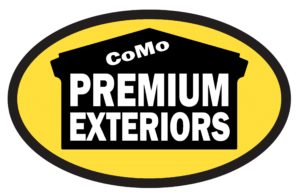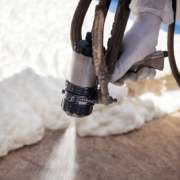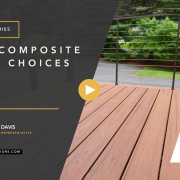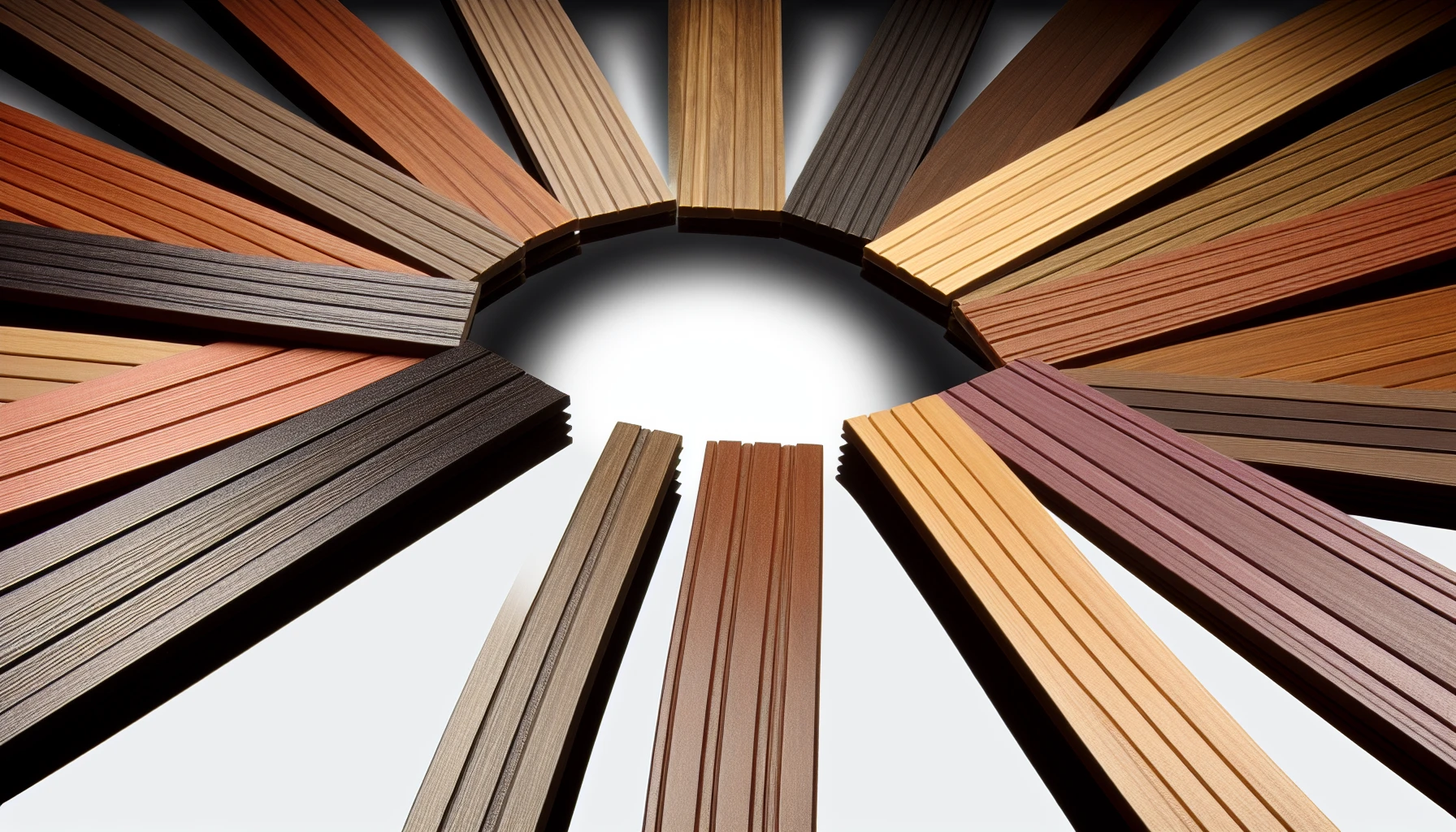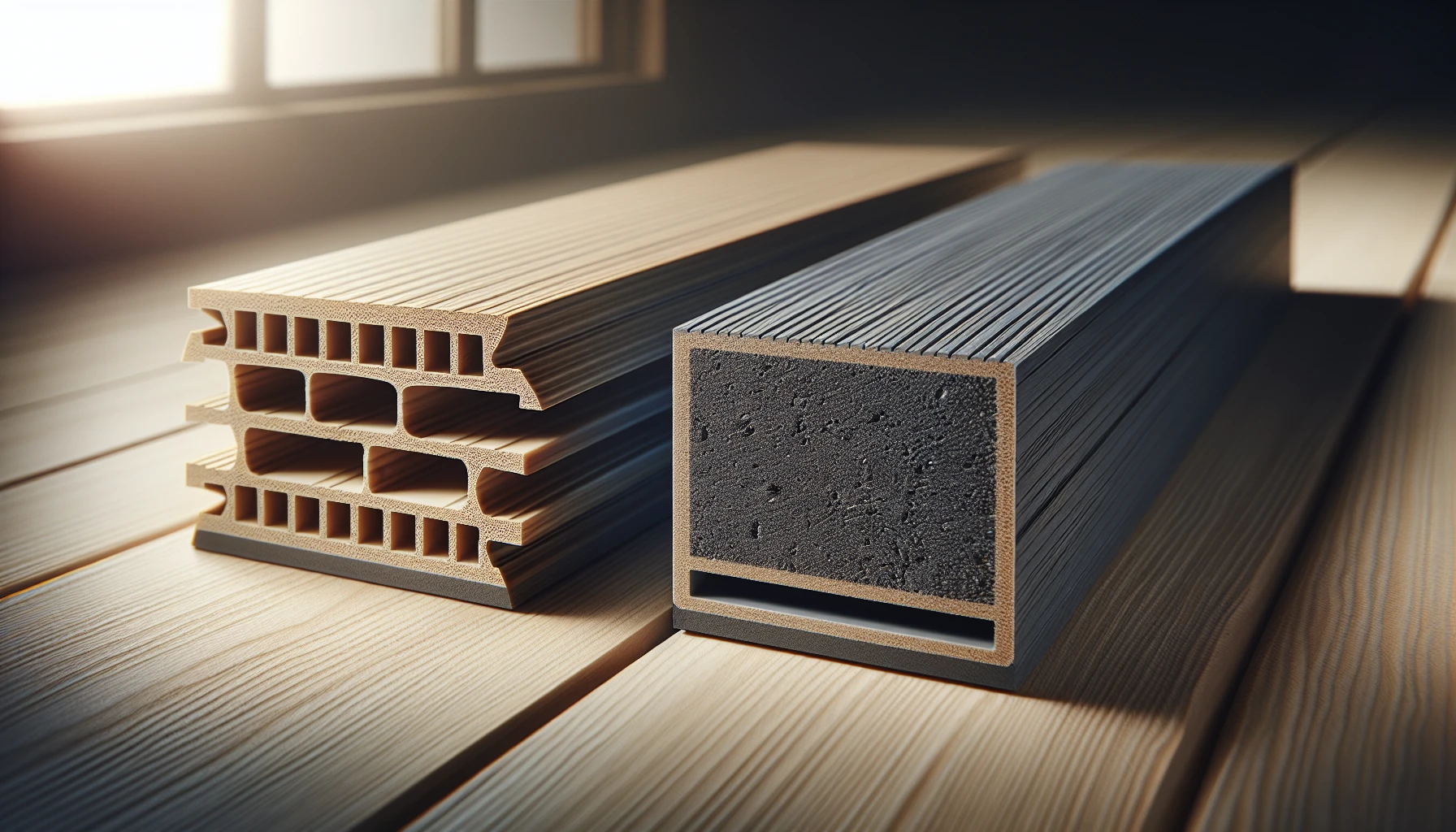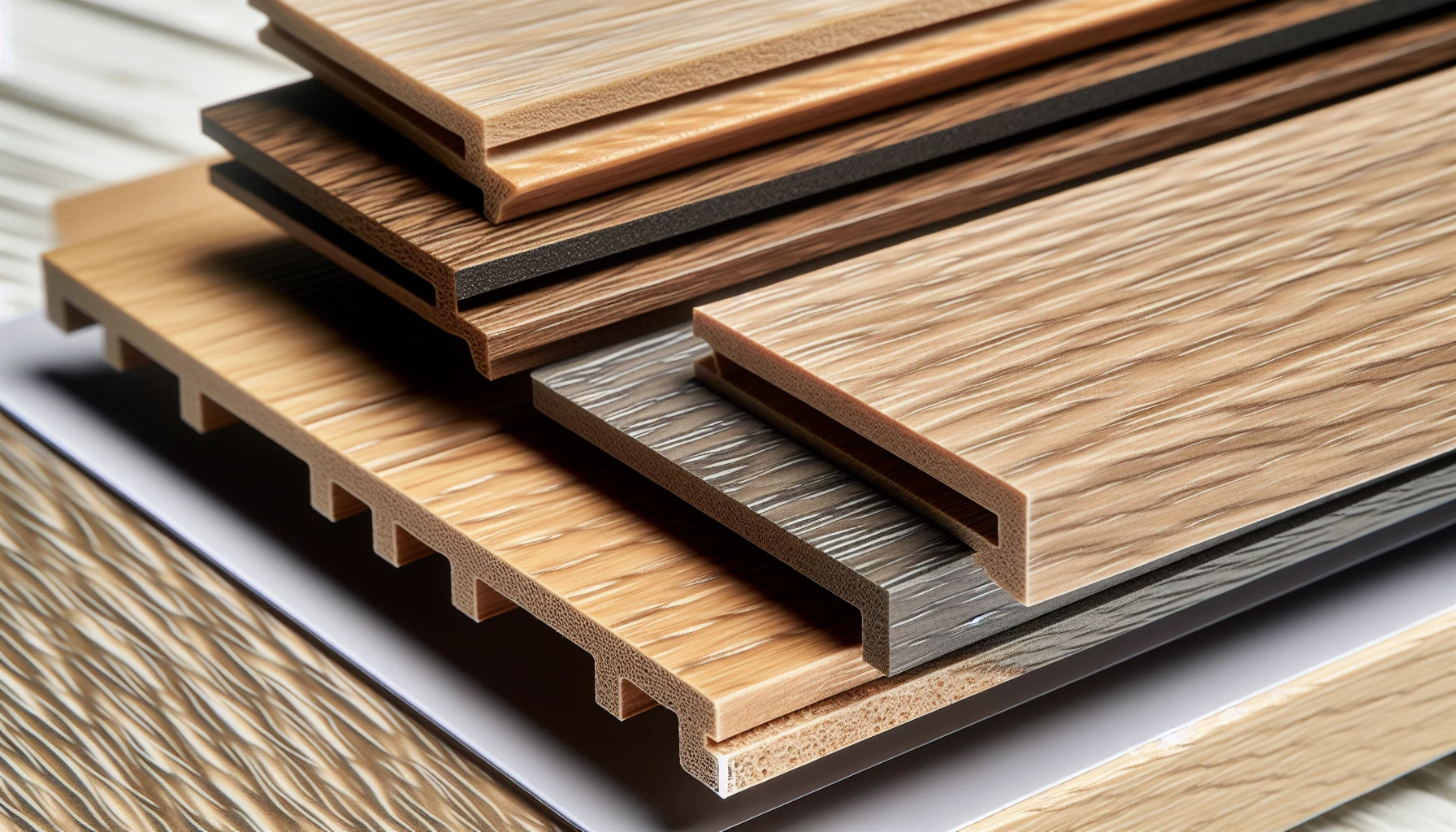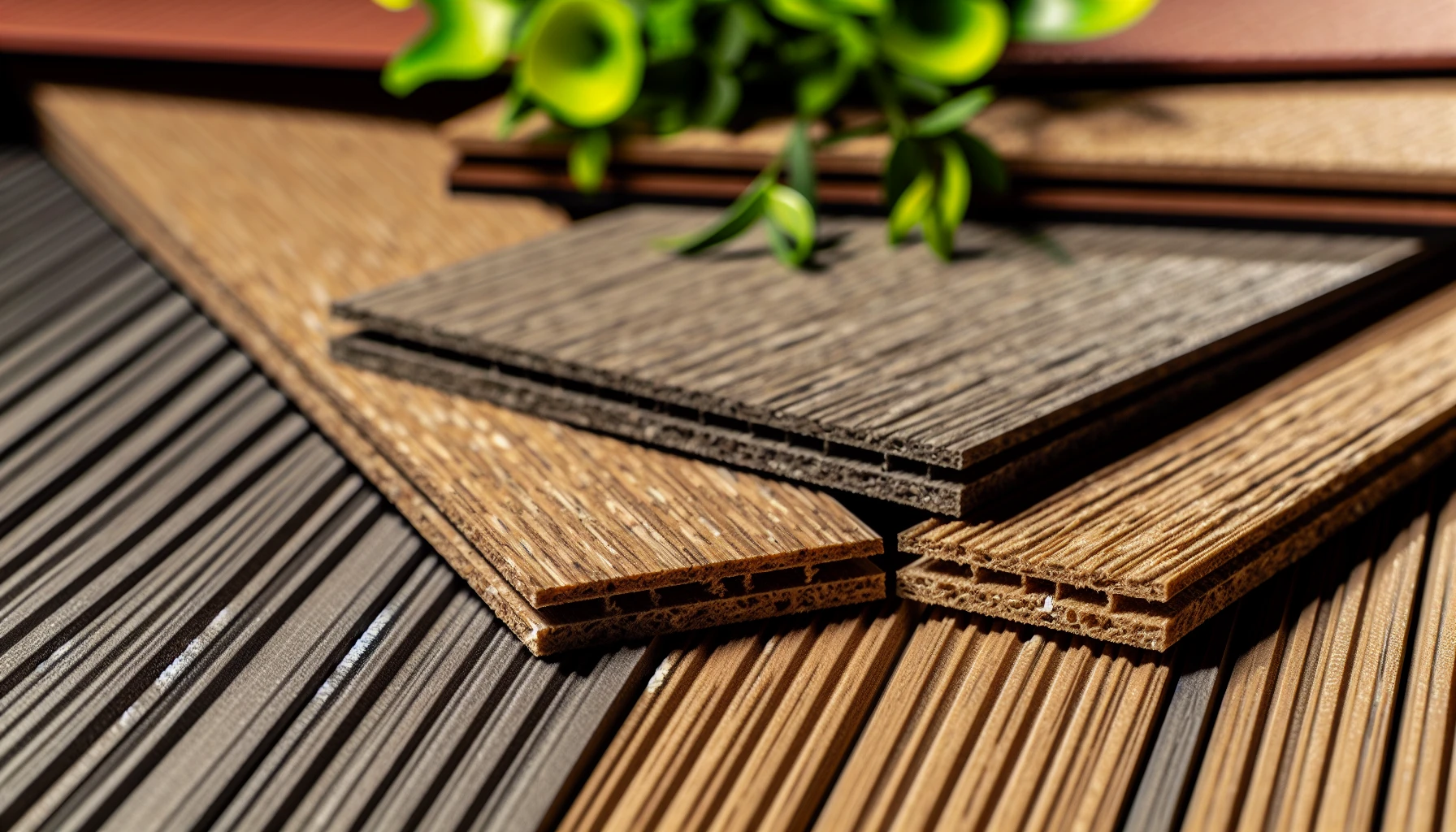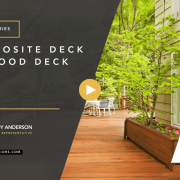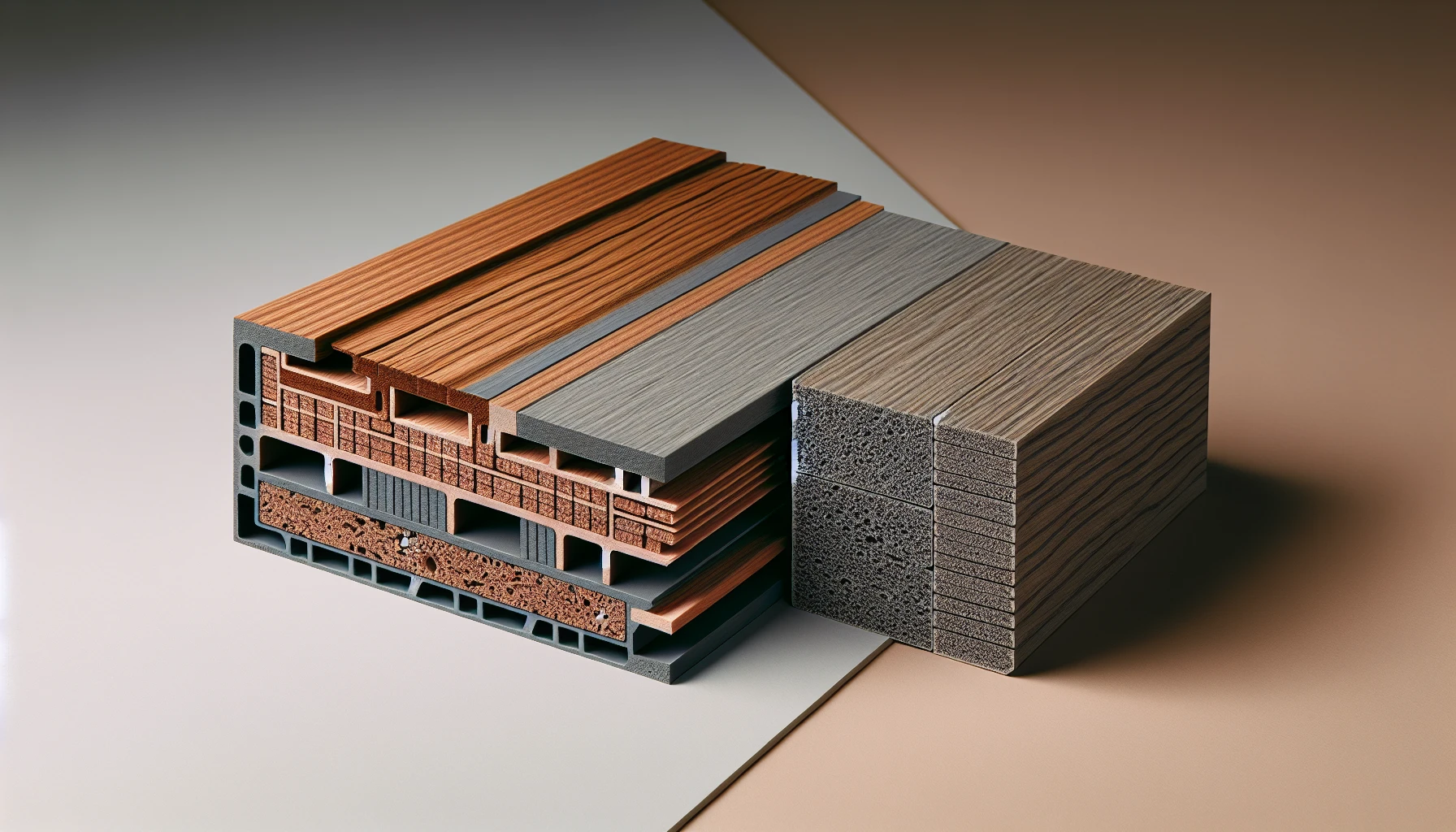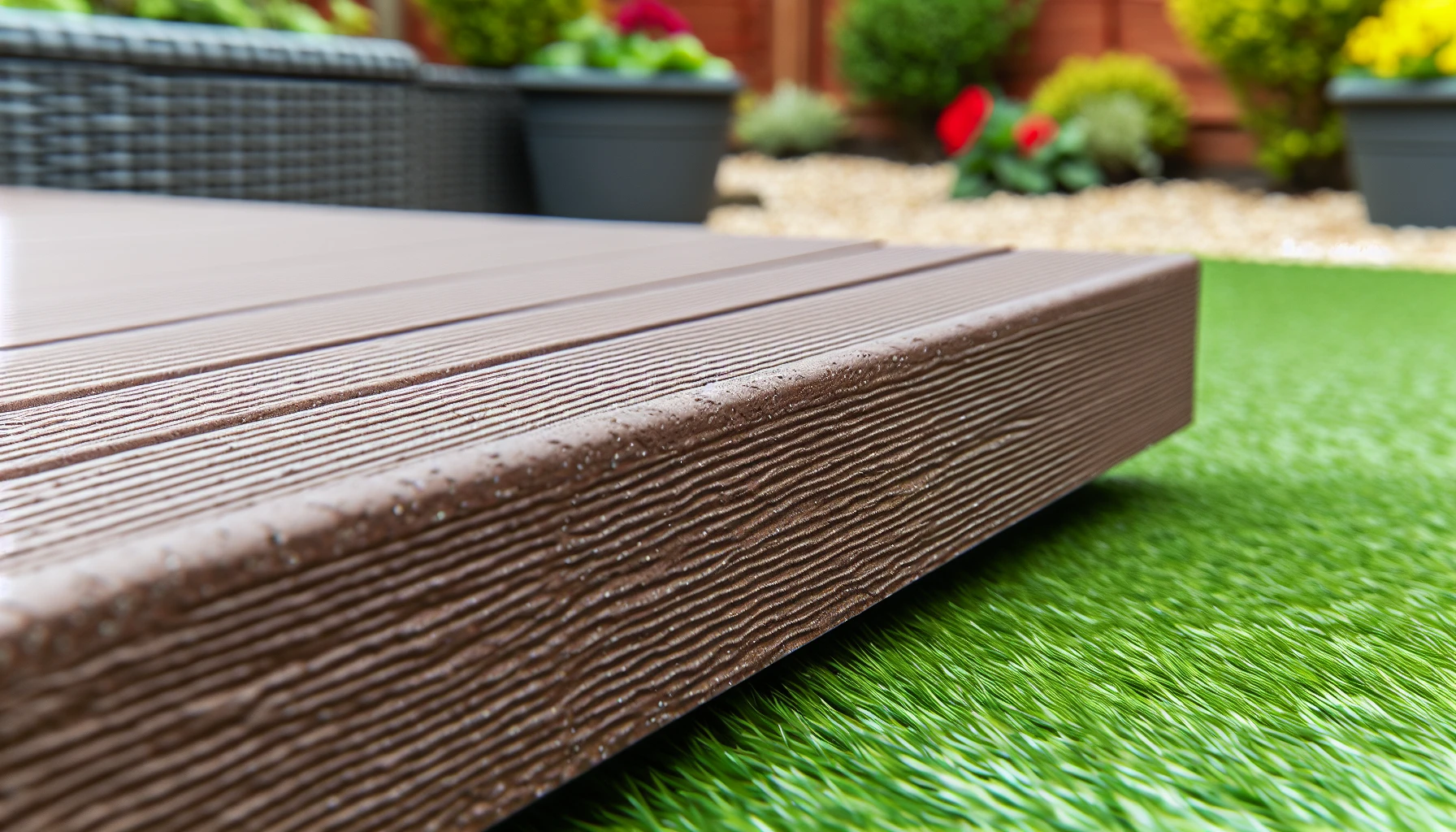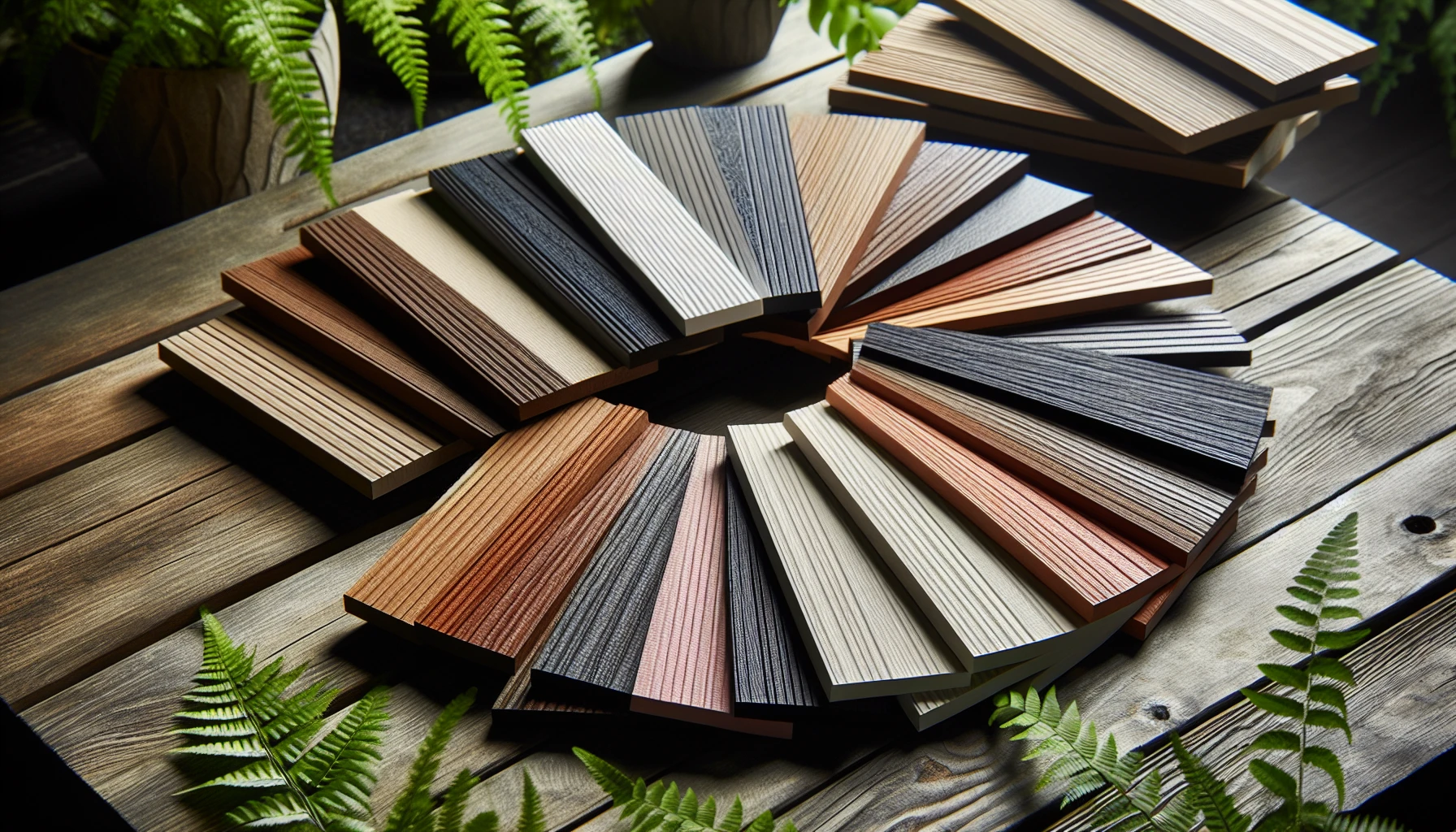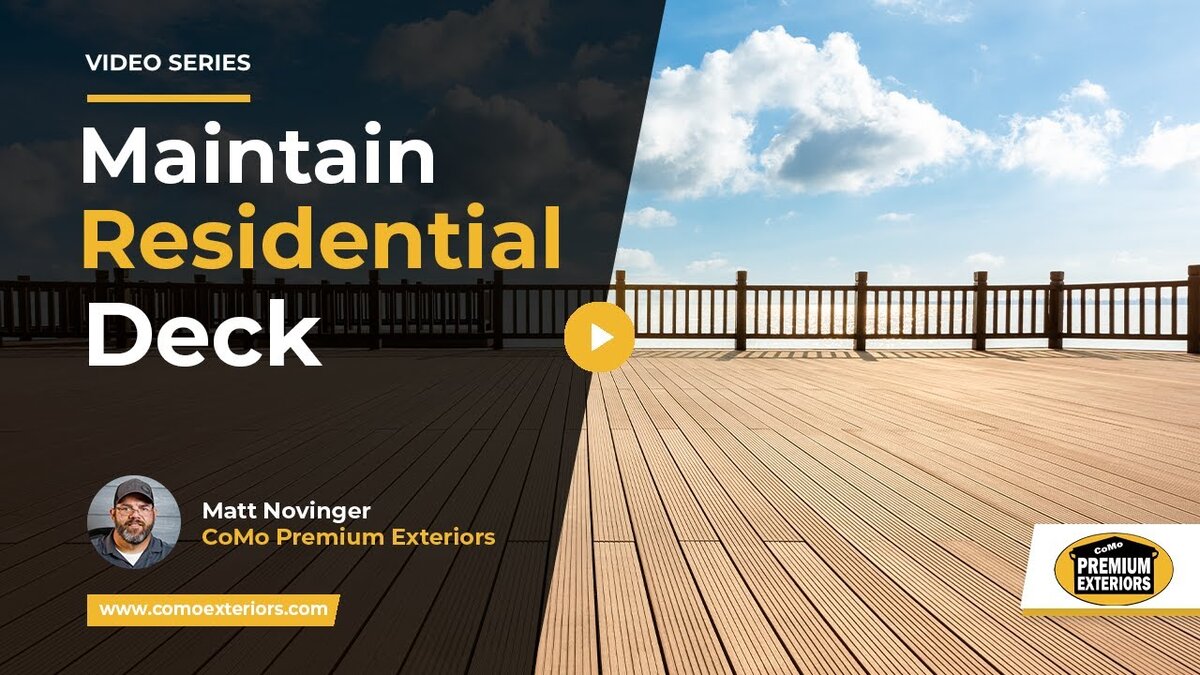Best Ways to Insulate Under Deck: A Complete Guide
How can you effectively insulate under deck for improved energy efficiency and moisture control? This guide covers the key benefits, best materials, preparation steps, and installation methods to help you get the job done right.
Key Takeaways
-
Insulating under your deck boosts energy efficiency, reduces heating costs, and prevents moisture issues that can harm your deck’s structure.
-
Choosing the right insulation materials, like rigid foam and batt insulation, is key to achieving optimal thermal performance and comfort.
-
Regular maintenance, such as cleaning and inspections, is essential to extend the lifespan of your insulation and protect against moisture and pests.
Importance of Insulating Under Deck
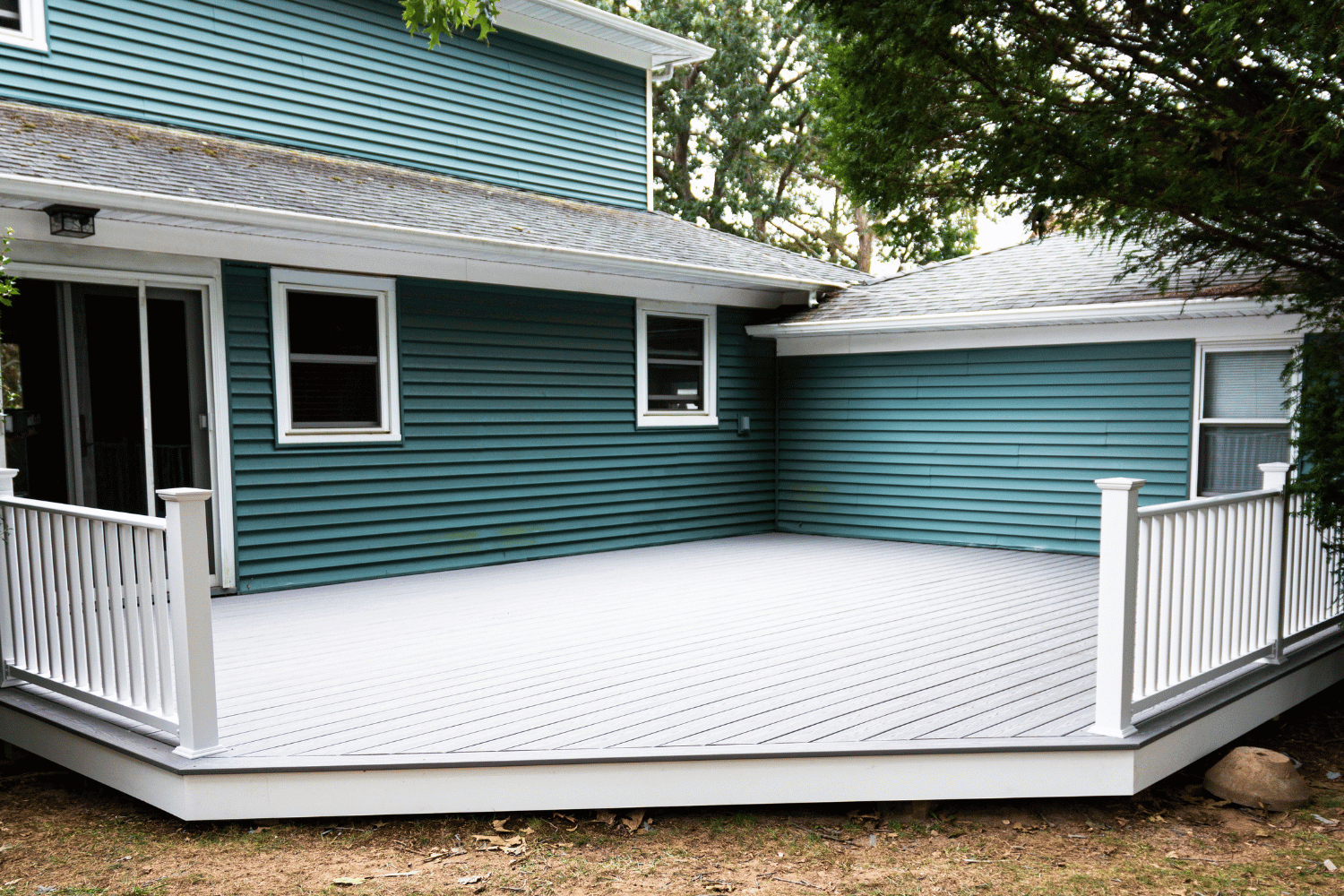
A well-insulated deck showcasing insulation materials underneath.
Insulating under your deck is more than just a smart move for your comfort; it’s an investment in your home’s energy efficiency. Proper insulation can prevent significant heat loss during the winter, helping to keep your home warmer without overworking your heating system. Insulation reduces heat transfer, easing the load on your HVAC system and resulting in lower energy costs for heating and cooling. Who wouldn’t want to save on their energy bills?
But the benefits don’t stop there. Insulation materials are designed to impede heat flow, ensuring that your indoor temperatures remain comfortable regardless of the season. For instance, spray foam insulation can create an airtight barrier that enhances energy efficiency and indoor comfort. This means fewer drafts and a more stable temperature under the deck, making it a pleasant space to use year-round.
Moreover, effective insulation helps manage moisture, reducing the risk of condensation and mold growth. This not only protects your deck’s structural integrity but also extends its lifespan by shielding it from extreme temperatures. So, if you’re looking to make your home more energy-efficient, comfortable, and durable, insulating under your deck is a fantastic place to start.
Choosing the Right Insulation Materials

Various types of insulation materials laid out for selection.
Selecting the right insulation materials is crucial for achieving the best results. One popular option is rigid foam insulation panels, which come in various thicknesses and boast high R-values, making them suitable for a range of applications. These panels are known for their excellent thermal performance and structural support, making them a reliable choice for insulating under your deck.
Batt insulation is another effective option, typically manufactured to fit snugly between standard wall studs and floor joists. Mineral wool batts, in particular, offer a greater R-value compared to fiberglass and are less likely to settle or compress when wet. This makes them a durable and efficient choice for maintaining thermal performance over time.
Closed-cell spray foam insulation offers a high R-value and a moisture barrier, making it a comprehensive solution. Spray foam can also be used to seal the seams of rigid foam insulation, enhancing its overall thermal performance. Ultimately, the right choice depends on your specific needs and the conditions under your deck.
Preparing the Deck Area
Before jumping into the insulation process, it’s essential to prepare the deck area properly. Start by thoroughly cleaning the underside of the deck to remove debris, dirt, and mold. This ensures that the insulation adheres effectively and lasts longer. Regular cleaning also helps to eliminate any potential sources of moisture buildup, which can lead to structural damage over time.
Next, inspect your deck for any signs of rot or damage. Addressing these issues before installing insulation is crucial, as they can worsen and undermine the structural integrity of your deck. Regular inspections help identify and fix problems early, ensuring the longevity of your deck.
Finally, ensure proper ventilation in the deck area. Adequate airflow prevents moisture buildup, which can cause mold and rot. Make sure that vents are not obstructed by debris to maintain good airflow beneath the deck. With these preparation steps, you’re ready to move on to the actual insulation process.
Installing Spray Foam Insulation
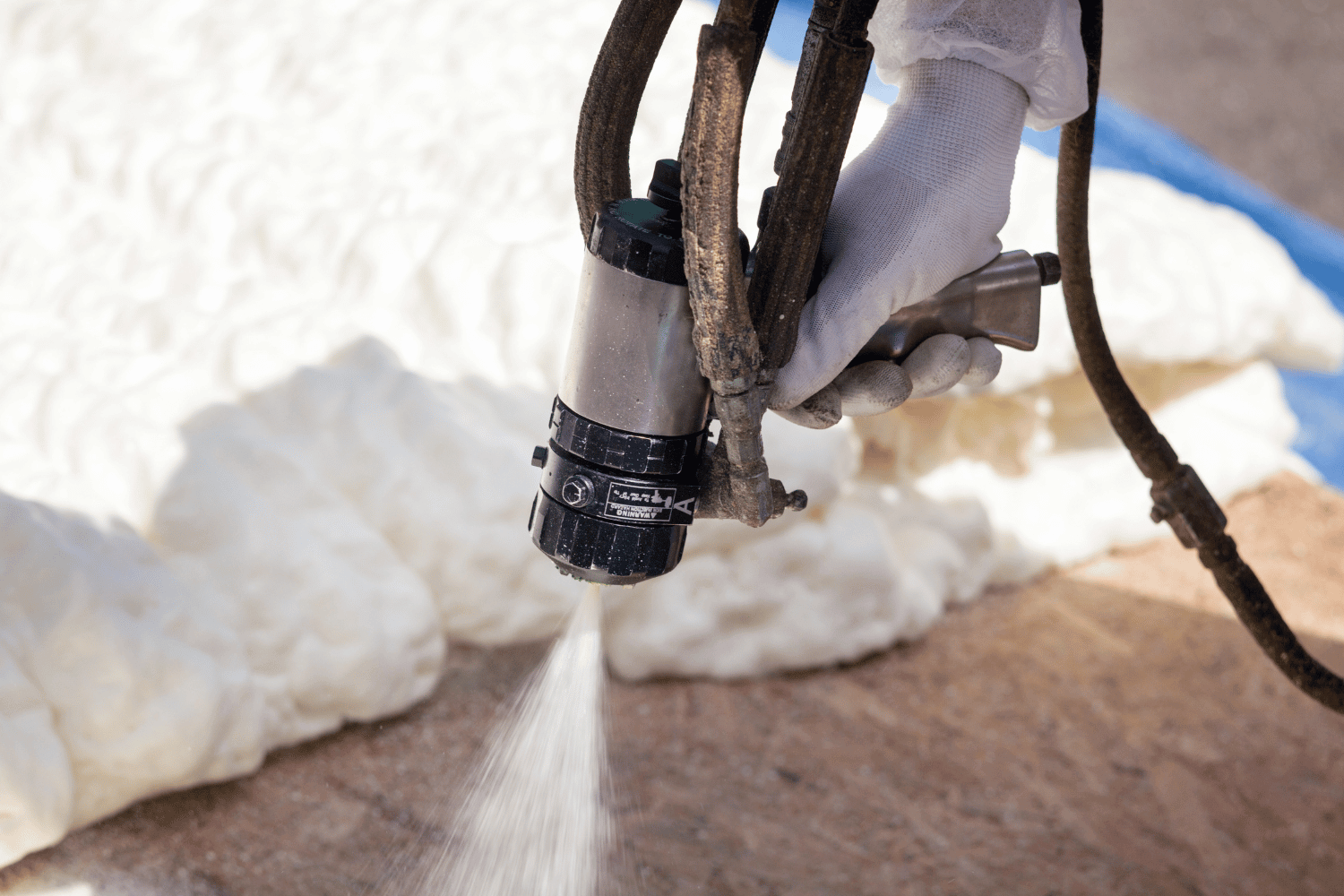
Installation of spray foam insulation in a deck area.
When it comes to spray foam insulation, preparation is key. Begin by removing any old insulation and ensuring that surfaces are clean and dry. This step is crucial for achieving an even application and optimal adhesion of the spray foam. Depending on your specific needs, you can choose between open-cell and closed-cell foam, with the latter offering superior moisture resistance and structural strength.
Spray foam insulation is available in DIY kits, making it accessible for homeowners who prefer to handle the installation themselves. When applying the spray foam, ensure even coverage and wait for it to dry completely before trimming any excess material. This creates an airtight barrier that enhances energy efficiency and helps prevent condensation.
For those who are not comfortable with DIY projects, hiring a professional contractor can ensure a flawless installation. Contractors have the experience and equipment to apply the spray foam correctly, maximizing its benefits and longevity. Regardless of whether you opt for DIY or professional installation, spray foam insulation is an excellent choice for under-deck insulation.
Using Batts for Insulation
Batt insulation is a popular choice for under-deck insulation due to its ease of installation and effectiveness in reducing energy loss. To install batt insulation, position it in the joist bays so that it forms a friction fit, ensuring it does not compress and lose effectiveness. This friction fit is crucial as it keeps the batt insulation intact, maximizing its thermal performance.
Batt insulation not only improves energy efficiency but also maintains a comfortable temperature under the deck, making the space more usable as a season room and pleasant throughout the year. The installation process is straightforward and can be completed by most DIY enthusiasts, making it an accessible option for many homeowners.
Combining rigid foam and batt insulation provides added protection and can achieve a higher insulation R-value. This approach provides cost-effectiveness while achieving a higher insulation R-value. With the right materials and proper installation, batt insulation can significantly enhance the comfort and energy efficiency of your deck area.
Adding a Vapor Barrier
A vapor barrier is a critical component in managing moisture under your deck. This plastic or impermeable sheet blocks moisture from rising from the ground moisture, making it especially beneficial in humid or rainy environments. Installing a vapor barrier can significantly reduce moisture buildup, thereby extending the life of your deck and minimizing the risk of mold growth.
Use heavy plastic sheeting for a vapor barrier, ensuring it is tightly secured to divert moisture away from the deck. This prevents moisture from getting trapped underneath, which can lead to structural damage and reduce the effectiveness of your insulation. Vapor barriers are particularly important for decks that are close to ground level, where moisture levels are typically higher.
For additional moisture protection, consider using waterproof sealants and joist tape. These materials can enhance the effectiveness of your vapor barrier and provide an extra layer of defense against moisture. By taking these steps, you can protect your deck and insulation from the damaging effects of moisture.
Insulating the Porch Floor
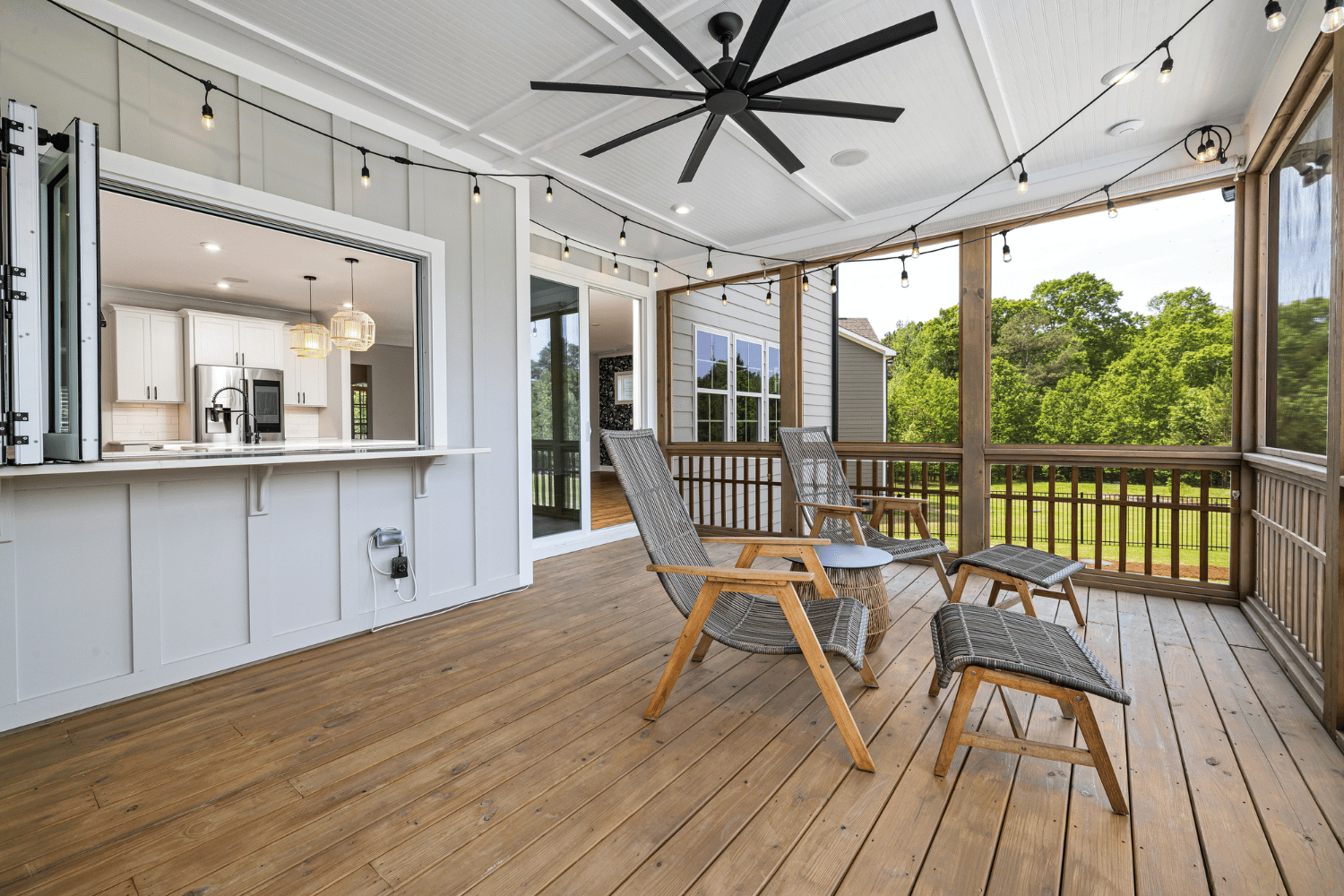
A completed insulated porch floor with visible insulation layers.
Insulating your porch floor can significantly improve energy efficiency and comfort by reducing drafts and heat loss. Start by using treated plywood as a top layer to protect the insulation from moisture and potential damage. This not only increases the longevity of the insulation but also ensures that it remains effective over time.
Implementing proper insulation techniques for your porch floor can make a noticeable difference in the comfort of your home. Reducing drafts stabilizes indoor temperature, making your porch or sunroom room more comfortable year-round. Whether you’re insulating a porch, sunroom floor, or patio, the right materials and methods are essential for achieving the best results.
Using house wrap beneath the plywood can also help block wind and air infiltration, keeping the floor warmer. With these steps, you can ensure that your porch floor is well-insulated and protected from the elements.
Protecting Against Critters and Insects
One of the challenges of insulating under a deck is protecting the area from critters and insects. Installing screening beneath the deck can effectively block insects from entering through gaps between the floorboards. This is a simple yet effective solution to keep your crawl space bug-free.
Using deck skirting made from pressure-treated wood can prevent pests from accessing the space beneath the deck. Skirting not only adds a finished look to your deck but also serves as a barrier against critters. For existing decks, under-deck screening can be added, although it may require more effort than placing it during initial construction.
These precautions help safeguard your insulation and deck structure from pest damage. Ensuring that your deck area is well-protected will help maintain the effectiveness of your insulation and the overall integrity of your deck.
Maintaining Your Insulated Deck
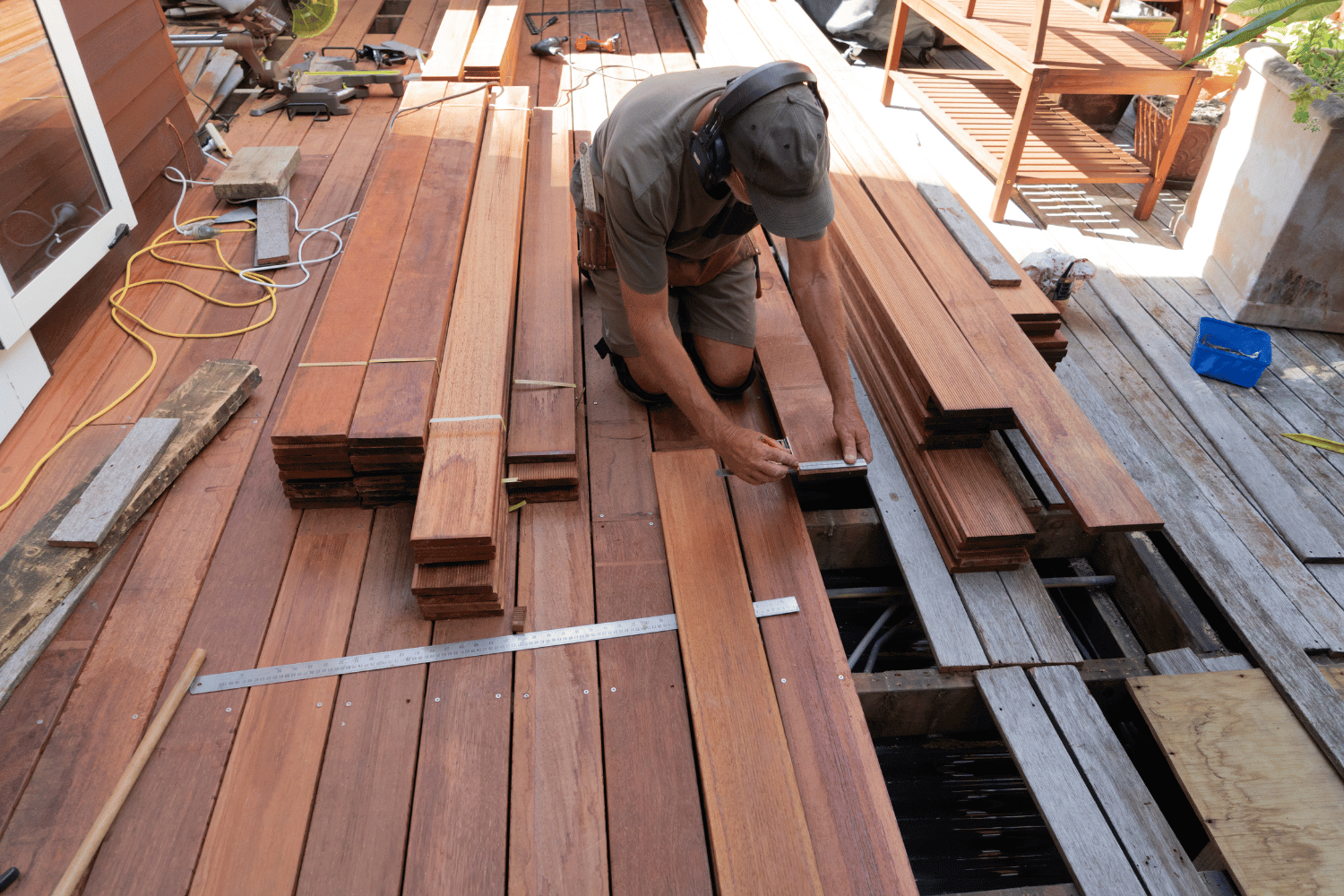
Maintaining Your Insulated Deck
Maintaining your insulated deck is crucial for ensuring its longevity and effectiveness. Regular cleaning of the deck area helps remove debris that could lead to moisture retention and damage. Conducting frequent inspections for wear, loose fasteners, or damage helps identify and address issues early, ensuring safety and longevity.
Regular inspections of the insulation are essential to detect moisture, mold, pest infestations, and physical damage early on. Addressing moisture problems promptly is vital to prevent insulation deterioration, which includes fixing leaks and ensuring adequate ventilation. If your deck is made of wood, applying a sealant or stain can protect it from moisture and UV damage, with reapplication based on wear.
Preventing mold growth on insulation involves maintaining proper ventilation and addressing any moisture issues without delay. To protect insulation from pests, seal any gaps in your home’s exterior and consider using pest-resistant materials. Following these maintenance tips will keep your insulated deck in top condition for years.
Summary
In summary, insulating under your deck is a smart investment that enhances energy efficiency, comfort, and the lifespan of your deck. By choosing the right materials, preparing the deck area properly, and following best practices for installation and maintenance, you can achieve outstanding results. Whether you opt for spray foam, batt insulation, or a combination of both, the key is to ensure proper installation and ongoing care.
We hope this guide has provided you with valuable insights and practical tips for insulating under your deck. By taking these steps, you can create a more comfortable and energy-efficient outdoor space. Happy insulating!
Frequently Asked Questions
What is the best type of insulation for under a deck?
For under a deck, rigid foam insulation panels are your best bet due to their durability and moisture resistance. They’ll keep your space cozy while preventing water damage!
How do I prepare my deck for insulation?
To prepare your deck for insulation, start by cleaning the underside, checking for any damage, and making sure there’s proper ventilation. This will help the insulation stick and work effectively.
What is the purpose of a vapor barrier?
A vapor barrier is crucial for blocking moisture from the ground, helping to prevent mold growth and structural damage under your deck. It’s a simple way to protect your space from unwanted moisture issues!
How can I protect my insulated deck from pests?
To keep your insulated deck pest-free, consider installing screening, adding pressure-treated wood skirting, and sealing any gaps in your home’s exterior. These steps will effectively shield your deck from unwanted critters!
How often should I inspect my insulated deck?
You should inspect your insulated deck regularly to catch any wear, moisture issues, or pests early on. This proactive approach will help keep your insulation effective and extend its lifespan.
